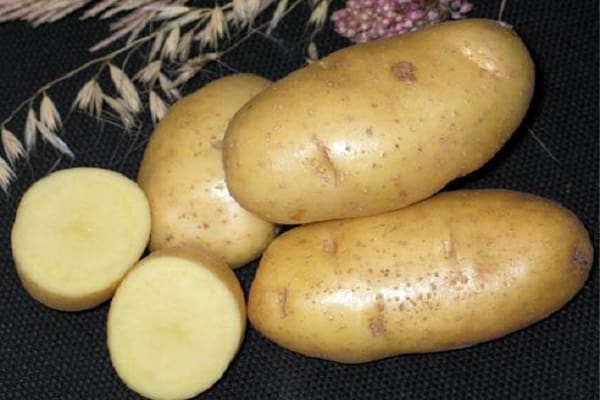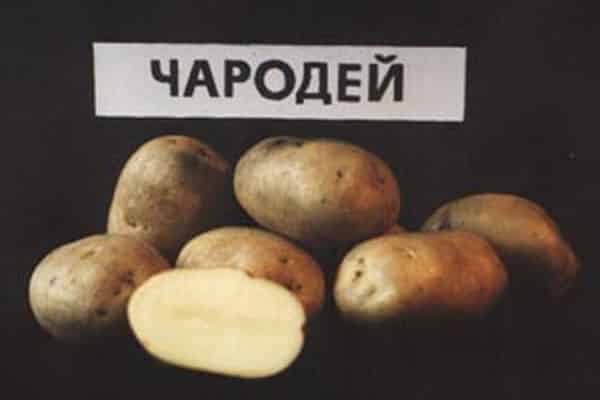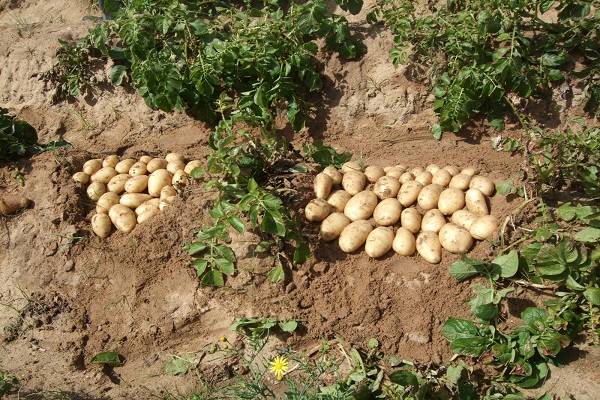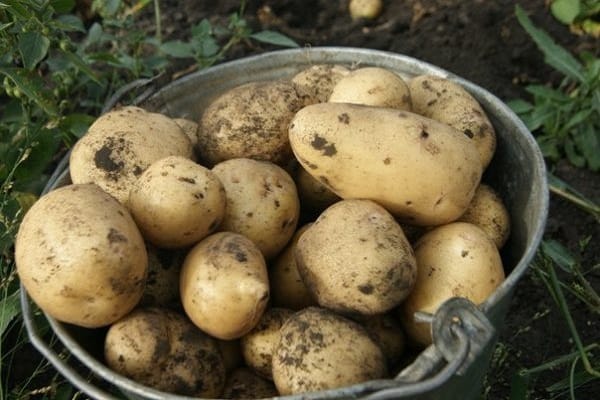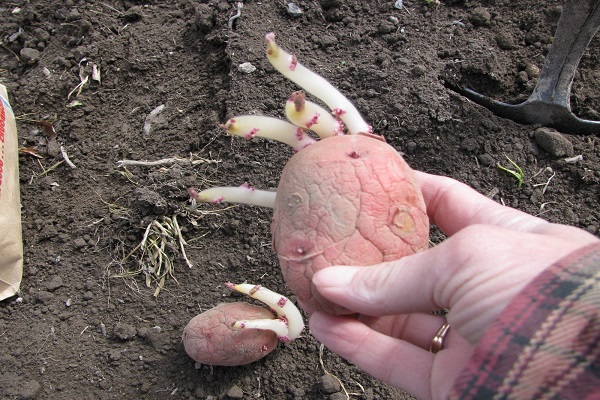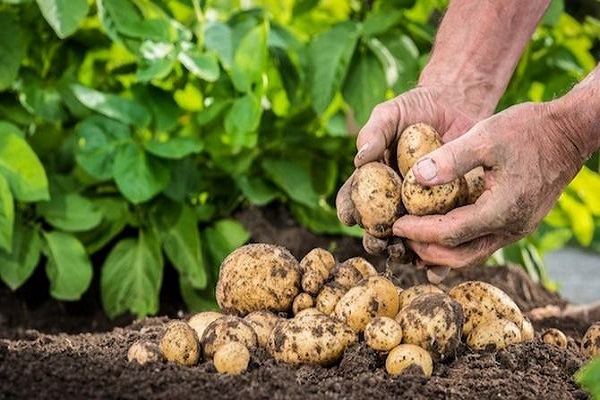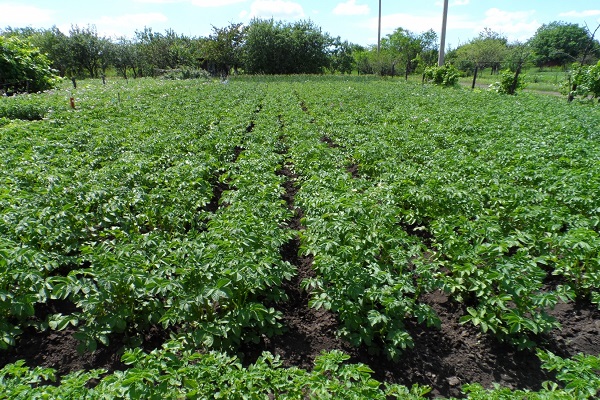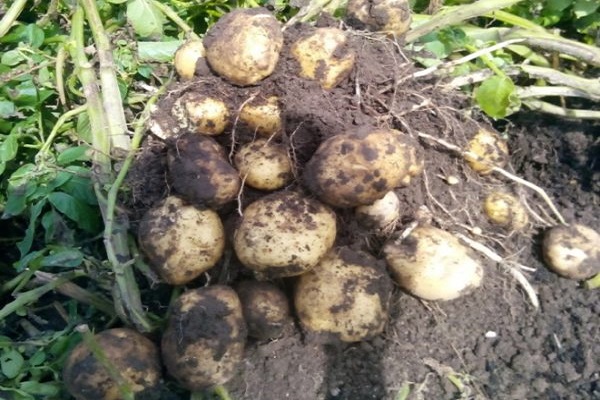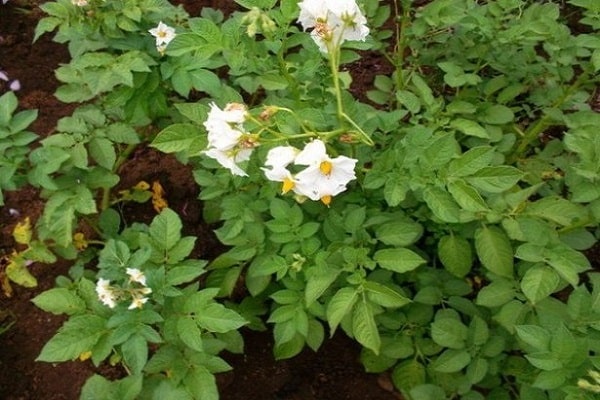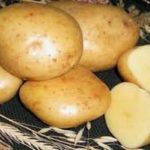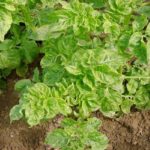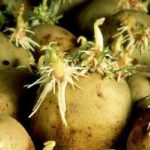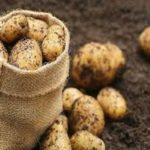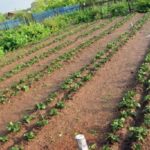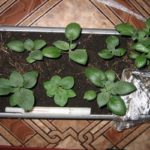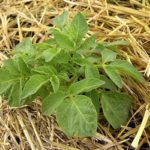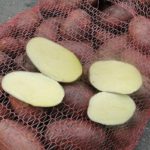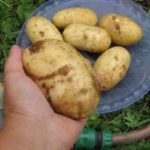The Magician potato appeared as a result of experiments by Russian breeders. The culture belongs to the table varieties and is characterized by a medium-late ripening period. From the moment the first shoots appear until the fruit ripens, 80 to 90 days pass.
Potato bushes have an average height and are characterized by spreading tops. The stems are erect and located perpendicular to the ground surface. The shoots have large leaf plates, the length of which reaches 15 cm. A distinctive feature is the light green tint of the leaves and their specific shape.Unlike most potato crops, the Enchanter has a straight leaf shape without waves along the edges. During the period of inflorescence formation, lush flowers with white corollas can be observed on the bushes. When they bloom, they emit a pleasant scent.
What benefits does the plant have?
The sorcerer is a type of popular and sought-after potato varieties. Today the crop is actively grown on farms and in small private farmsteads. Features and advantages of the type:
- good taste;
- ability for long-term storage;
- aesthetic appearance;
- low content of starchy substances;
- resistance to environmental factors;
- undemanding to the composition of the soil;
- resistance to many potato diseases.
The variety is considered a species resistant to pathogens of potato tuber cancer and moderate immunity to late blight infection. It tolerates attacks of Colorado potato beetles well and has minimal damage. The disadvantage of the Magician is the high risk of infection with golden nematode. To prevent and protect plants from such diseases, legumes and cereals are planted.
The Sorcerer's tubers tolerate heat conditions well and do not stop developing. The variety is able to withstand periods of prolonged rain, when most crops begin to turn black and die. Vitality and resistance to stress are considered the virtues of the Sorcerer.
Reviews from gardeners confirm the excellent taste of potatoes for table purposes. After peeling and cooking, the potatoes do not darken, do not stain the water, and turn out crumbly, which is especially appreciated when preparing mashed potatoes and fried potatoes.Potato fruits are not prone to the formation of voids, so there are no problems when peeling and cutting.
Description of fruits
Potato tubers are massive, they are characterized by an oval shape and the presence of small eyes on the surface of the peel. Potatoes have thin, smooth skin that is light in color, closer to a creamy shade. A distinctive feature of root vegetables is the density of the milky-white pulp and the absence of every second darkening when cut. The average starch content varies from 12 to 15%.
Characteristics of the variety:
- have average weight;
- visually appear larger due to their elongated oval shape;
- small eyes on the surface of tubers;
- light brown shade of the peel;
- milky flesh;
- low starch content.
Description of the potato variety Charodey says that the average weight of one fruit varies from 75 to 120 grams. Some representatives of the variety can reach 150 grams. From one hectare, with the correct agricultural technology, the yield can be obtained from 27 to 35 tons.
The advantage of the variety is its good ability to be stored in cellars or large warehouses. The average shelf life is 96%.
The nuances of working with planting material
The Magician potato variety is suitable for growing in almost all types of soil. The advantage of planting material is the low degree of response to sprouts breaking off and the lack of a tendency to form a huge number of “babies”. Before direct planting in the soil, they are treated with fungicides and stimulants.
To obtain good planting material, a month before planting, the tubers are placed in a warm, illuminated room.The use of the following drugs helps reduce the risk of infection with late blight and rhesoctoniasis:
- Fitosporin-M.
- Alirin-B.
To enhance the growth processes, the tubers are treated with Mivalom, diluting the product in a proportion of 1 gram per 0.1 liter of water.
Features of planting and care
Tubers are planted in heated soil when the soil temperature reaches 10 degrees. The soil should be quite loose and when forming rows it is recommended to enrich the soil with fertilizers. It is recommended to carry out local application of nutritional components into planting holes or formed trenches.
The distance between rows should be from 65 to 75 cm. The planting scheme has no specific differences and consists in maintaining a distance of 60 by 35 cm. The tubers are buried at 8–10 cm. When growing potatoes from pre-sprouted tubers, the first shoots appear after 12 or 15 days. In the case of planting seeds without pre-treatment, the time increases and averages from 18 to 24 days.
Care consists of timely weeding and loosening. Mandatory procedures include hilling up potato bushes. Delayed work and untimely hilling may result in the appearance of green fruits on the soil surface. Such tubers from healthy plants are not recommended for consumption, but they can be left as seed material.
Recommendations for cultivation
Thanks to its powerful root system, the plant is undemanding to care, does not require frequent watering and is able to provide a sufficient amount of nutrients from the soil, so it does not require frequent feeding.During the entire ripening period, it is enough to carry out 3 to 4 waterings if there is insufficient natural moisture. Thanks to the spreading of the shoots and lush tops, the water does not evaporate and remains in the soil for a longer time.
To improve performance potato yield It is recommended to fertilize with nitrogen-containing preparations. To do this, for each square meter of planting, fertilizer is applied with one of the following components:
- ammonium sulfate - 25 grams;
- urea - 12 grams.
The first feeding of potato bushes with fertilizers is carried out during the first hilling of the tops. The second feeding is carried out at the stage of bud formation and the preparation should contain a large amount of potassium. We recommend one of the following products per square meter:
- potassium sulfate - 20 grams;
- potassium magnesia - 60 grams.
The peak formation of root crops is observed from the beginning of mass flowering until the lower leaves of the tops wither. Due to this feature, fruits are harvested after the shoots die. When tubers remain in the ground for a long time, it is fraught with loss and reduction in yield. The storage properties of potatoes deteriorate.
After harvesting, potato tubers must be given a certain time to dry. In warm sunny weather, such prices on average take several hours.
The degree of drying is determined visually and by contact. Potatoes should be stored in a dry place without signs of mold. Otherwise, the likelihood of damage and loss of tubers increases. The characteristics of the potato variety indicate that the yield loss during the winter period is no more than 4%.

